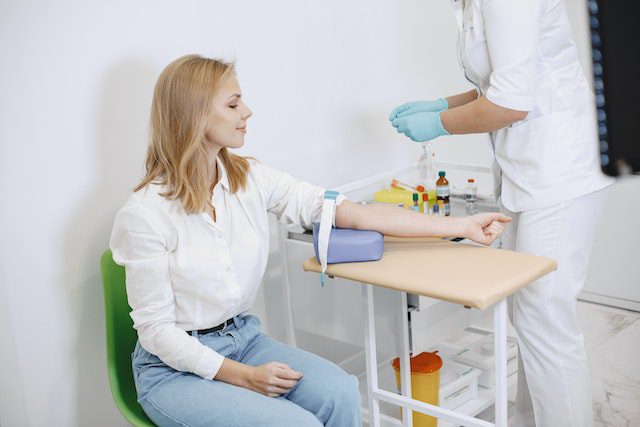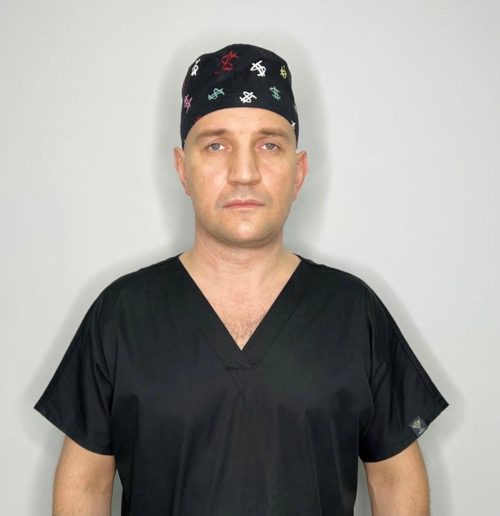Elevated hemoglobin, how to reduce it at home
Elevated hemoglobin, what to do to normalize it? Who faces this problem? What is hemoglobin? What level of hemoglobin in the blood is considered normal? Let’s understand these and many other important questions in more detail.
The doctors of Coolaser Clinic have put all important and relevant information on this topic in one article. What useful and interesting things will you learn from this article?
Content.
- Erythrocytosis and elevated hemoglobin: causes
- Why I have elevated hemoglobin, possible causes
- Elevated hemoglobin: symptoms
- Why it’s so important to know your hemoglobin level
- Hemoglobin by age in children (table)
- Hemoglobin in adults (table)
- High hemoglobin in blood, what to do and who to contact
- Elevated hemoglobin: diagnosis
- Preventing elevated hemoglobin
- Pharmaceutical remedies that lower hemoglobin
- How to lower hemoglobin fast at home
- Elevated hemoglobin, how to reduce by folk remedies
- Treatment for elevated hemoglobin
- The Effects of Elevated Hemoglobin
Erythrocytes and hemoglobin

Erythrocytes are a type of blood cell, they are called red blood cells.
Erythrocyte Functions:
- capture oxygen molecules from the lungs and carry them to all organs and tissues in the body;
- remove carbon dioxide from all cells and tissues in the body;
- perform a protective function, improving immunity by carrying immunoglobulin;
- are involved in the formation of hemoglobin in the blood.
Hemoglobin is a protein that is produced in red blood cells. This protein carries iron around the body, which holds oxygen. Hemoglobin levels depend on gender, age, and the presence of features or diseases in the body.
Any abnormality is a sign that the patient is developing a disease. But it may not be a disease, but a peculiarity of the body or a temporary condition. Only a doctor can determine whether treatment or correction of diet and habits is required.
Types and forms of hemoglobin
There are a total of three types of protein:
- HbA is the hemoglobin in the blood of an adult;
- HbP is fetal, which occurs from week 5 through week 18 of gestation;
- HbF is fetal, observed in the blood of fetuses and children under three years of age.
Protein forms:
- methemoglobin – contains iron of the third valence that does not react reversibly with oxygen;
- oxyhemoglobin – contains iron of the second valence, which carries oxygen to tissues and organs;
- myoglobin – found in muscles, responsible for the depot of oxygen in them;
- carboxyhemoglobin – forms compounds with carbon monoxide.
Elevated hemoglobin is a serious reason to see a doctor and get a medical checkup
Hemoglobin glycation hemoglobin A1c (HbA1c)
Glycated hemoglobin A1c (HbA1c) is a protein to which glucose has joined. The glycated hemoglobin (HbA1c test) test is administered to patients suspected of having diabetes mellitus. Such an analysis clearly shows the average blood glucose level from two to four months.
Blood sugar (glucose) has the ability to attach to protein for about 120 days. The level of glycated hemoglobin in the blood depends largely on the blood glucose content. In people without diabetes, an HbA1c test will show about 5.7%.
For patients with diabetes, doctors recommend that the level of glycated hemoglobin in the blood should not exceed 7%. If this indicator is persistently high, it is necessary to change the drug regimen.
Polycythemia, erythrocytosis: clinical manifestations
Polycythemia (erythremia) is a process in the blood (hyperplasia of bone marrow cell elements) that is associated with a benign tumor. Primary (true) polycythemia or Vaquez’s disease – the formation of red blood cells in excess occurs, the number of platelets and leukocytes also increases, but not so significantly.
Due to a significant increase in red blood cells, the blood becomes more viscous and its mass increases. More blood is involved in the circulation, which leads to a decrease in the speed of blood flow in the blood vessels. Blood clots begin to form, blood supply is impaired and hypoxia develops.
This disease was first described by Vaquez in 1892. In 1903, Osler suggested that the disease was associated with increased bone marrow activity.
Erythrocytosis (elevated hemoglobin) is an increased level of red blood cells in the blood, which may indicate pathological processes in the body or physiological features.
Erythrocytosis and elevated hemoglobin: causes
Erythrocytosis is when a unit volume of blood contains an increased number of red cells and there is an increased hemoglobin. Symptoms may include dizziness, malaise, headaches and muscle aches, increased fatigue, and frequent nosebleeds. Other symptoms depend on the underlying disease.
Absolute erythrocytosis (true) – occurs against the background of increased erythropoiesis, the mass of red blood cells involved in blood circulation increases. True erythrocytosis can be primary or secondary.
Relative erythrocytosis – blood clotting and increased hemoglobin occurs at the usual intensity of erythropoiesis.
Two types of absolute erythrocytosis are distinguished:
- Primary erythrocytosis is an independent disease that manifests itself as a genetic disorder in the hematopoietic system. In this genetic pathology, the production of red blood cells and hemoglobin is increased due to increased bone marrow volume. There are two medical terms that characterize this kind of disorder – Vaquez disease or congenital (true) polycythemia.
- Secondary erythrocytosis is not a disease but a symptom of chronic or acute conditions or diseases.
Relative erythrocytosis: causes
Most often the cause of pathology are such factors:
- dehydration of the body (after severe vomiting or diarrhea);
- drug overdose or drug poisoning;
- smoking;
- alcohol abuse;
- exposure to the chemical nitrite.
Absolute erythrocytosis, causes.
Key factors influencing the development of pathology:
- diseases of the internal organs;
- diseases of the body systems.

Why I have high hemoglobin, possible causes.
Elevated hemoglobin comes from hereditary or acquired causes.
Hereditary:
- the Jak2 V617F gene, responsible for the production of red blood cells, has structural changes that are passed on to children from their parents;
- The inability of the blood to bind oxygen molecules and carry them to the tissues;
- reduced oxygen supply to the kidneys, production of the hormone erythropoietin;
- deficiency of enzymes that are responsible for the production of red blood cells and for the function of oxygen transport to tissues.
Acquired:
- cerebellar tumor;
- diseases of the endocrine system and thyroid gland: pheochromocytoma, Icenko-Cushing’s disease;
- lung diseases: bronchial asthma, obstructive bronchitis in chronic form and other diseases affecting lung tissue;
- congenital and acquired heart defects;
- tumors in the liver;
- kidney diseases: polycystic kidney disease, renal artery stenosis, oncology, hydronephrosis
- ovarian and uterine oncology;
- staying at high altitudes;
- carbon monoxide poisoning;
- apnea (temporary stoppage of breathing during sleep).
Dehydration of the body
Dehydration is the most common cause of elevated hemoglobin in the blood and it is the most “harmless” of the possible causes. But, it is important to restore normal hemoglobin levels so that your health can return to normal. Severe dehydration can be extremely dangerous and life threatening. Fluid loss of more than 20% leads to disturbances in cellular processes and irreversible changes.
Who is more likely to have elevated hemoglobin
Categories of people who are most likely to experience pathology:
- athletes;
- highlanders;
- climbers and mountaineers;
- patients with diseases of the circulatory system;
- steroid and anabolic enthusiasts;
- smokers and drinkers of alcoholic beverages;
- patients with diabetes mellitus;
- cancer patients;
- hypertensives;
- patients with intestinal obstruction.
Elevated hemoglobin in women occurs against a background of:
- obesity;
- profuse sweating;
- heart failure;
- hypertension;
- pulmonary obstruction;
- of strict diets and starvation;
- varicose veins;
- Accelerated blood clotting (blood clots may form);
- dehydration.
Elevated hemoglobin: symptoms
Patients most commonly report these symptoms to themselves:
- weakness in the body;
- collapse;
- worsening of sleep quality (a person sleeps as much but does not get enough sleep);
- panting even with little activity;
- joint pain;
- skin itching;
- severe dryness of the skin (lack of moisture in the body);
- headaches;
- reddish tint
Why it’s important to know your hemoglobin level
Hemoglobin level in the blood is an important indicator that indicates the state of health of the body, it is determined by a general blood test. This complex protein performs an important function, carrying oxygen from the lungs to all tissues and organs. It is contained in red blood cells – red blood cells.
By analysis, it is easy to determine whether hemoglobin is normal or there are abnormalities that may indicate the presence of a disease. Above in the article, we discussed in detail what is indicated by elevated or low hemoglobin (erythrocytosis or anemia).
You can read about the symptoms of anemia, types and how to diagnose and treat it in our blog article.
Hemoglobin by age in children (table)
| Child’s age | Indicator, g/l |
| Newborn | 145-225 |
| 1 week | 135-215 |
| 2 weeks | 125-205 |
| 1 month | 100-180 |
| 2 months | 90-140 |
| 3-6 months. | 95-135 |
| 6-12 months. | 100-140 |
| 1-2 years. | 105-145 |
| Ages 3-6 | 110-150 |
| Ages 7-12 | 115-150 |
| 13-15 years old | 115-155 |
| 16-18 years old | 120-160 |
Hemoglobin in adults (table)
| Age, years | Women, g/L | Men, g/L |
| 17-19 | 112-148 | 120-168 |
| 20-29 | 110-152 | 130-172 |
| 30-39 | 112-150 | 126-172 |
| 40-49 | 112-152 | 128-172 |
| 50-59 | 112-152 | 124-172 |
| 60 and over | 114-154 | 122-168 |
Hemoglobin in pregnancy above 110 g / l is considered normal, if there is no pregnancy, then 110 -120 g / l – a mild degree of anemia.
Elevated hemoglobin in the blood, what to do and who to contact
Once it has been determined that you have elevated hemoglobin, you should see a hematologist as soon as possible. It is possible that the hematologist will order a bone marrow biopsy or puncture. It is important to confirm or rule out a lesion in the red blood cells.
The second specialist to see is the general practitioner, who will take a history and decide which specialists to refer the patient to next.
A list of specialists the GP may recommend you see:
- neurologist;
- endocrinologist;
- pulmonologist;
- cardiologist;
- gastroenterologist;
- nephrologist;
- urologist;
- gynecologist;
- somnologist;
- neurosurgeon.
Elevated hemoglobin: diagnosis
What is important to find out first to confirm or rule out true polycythemia?
- Evaluate biochemical, clinical, hematologic parameters
- Assess the patient’s appearance and skin condition
- Determine if there is an enlargement of the spleen or liver
- Find out how prone the patient is to thrombosis
- Eliminate diseases causing hypoxia
- Eliminate inappropriate vitamin B12 treatment
To clarify the diagnosis, the doctor may need a bone marrow histologic study or trepanobiopsy.
Indicators that physicians evaluate
- an increase in the mass of circulating red blood cells;
- increased hematocrit;
- oxygen saturation of arterial blood (more than 94%);
- weight loss;
- enlarged spleen;
- weakness;
- if there’s evidence of secondary erythrocytosis;
- sweating;
- if there are any genetic abnormalities in the bone marrow cells;
- colony formation by erythroid cells;
- thrombocytosis;
- leukocytosis;
- Alkaline phosphase content of neutrophilic granulocytes;
- vitamin B12 levels;
- Erythropoietin levels.
Evaluation of bone marrow parameters and histologic analyses can be sufficient to make an accurate diagnosis.
Prevention of increased hemoglobin levels
Some of the main recommendations doctors make include:
- monitor your daily diet;
- swimming;
- an active lifestyle;
- tempering;
- avoiding bad habits;
- exercise in the mornings or evenings;
- carrot and beet juice in the morning;
- nutritional off-loading days;
- men are encouraged to donate blood (become a donor);
- dietary correction to cleanse the blood vessels and eliminate toxins, improve bone marrow function;
Pharmacy remedies that lower hemoglobin
You need to limit your intake of multivitamins and minerals
- B12
- Iron
- Folic acid
- B2
- B6
- Vitamin C
To reduce the risk of thrombosis, it is recommended to take medications that reduce blood clotting:
- Aspirin;
- Courantil;
- Cardiomagnil.
High hemoglobin – diet and drugs should be prescribed by a doctor, self-treatment is dangerous to health! The list of drugs is a recommendation and is not a call to action. List of drugs is a recommendation and is not a call to action.
How to quickly lower hemoglobin at home
To lower hemoglobin levels in the blood it is important to eliminate foods that contain iron. It is necessary to consume fats that increase cholesterol in minimal amounts. It is important to drink more water to prevent dehydration in the body.
Foods that increase hemoglobin, which are important to exclude from the diet
Желательно придерживаться вегетарианских диет (можно частично), исключить: продукты с повышенным содержанием витамина А, копченое, острое, жаренное, соленое и мясное.
Elevated hemoglobin, how to reduce folk remedies
Decoctions from birch leaves
- The first recipe. It is necessary to take 50 grams of each of the herbs: celandine leaves, valerian root, lavender flowers, willow bark, mistletoe leaves, rosehip berries, ruta leaves. Components are crushed and mixed. One tablespoon of the herb mixture is poured a glass of boiling water and insist for 3 hours. It should be taken before meals, 30 minutes. The course consists of 10 days, then make a week’s break and if necessary, the course is repeated.
- The second recipe. It is necessary to take 50 grams of each of the herbs: shepherd’s purse, mistletoe, horsetail, dandelion root. One tablespoon of the mixture of herbs is brewed immediately before use in 0.25 liters of water, boil for 3 minutes. After cooling down to room temperature, drink.
Unusual but effective methods
- Use of leeches. The saliva of leeches contains a special enzyme – hirudin. It reduces blood viscosity and lowers clotting. The technique helps to maintain normal hemoglobin levels for up to 6 months. Leeches – this is an ancient method that helps to regulate and normalize the composition of the blood. It is important to follow the conditions of antiseptic treatment of the bites until complete healing.
- Mumie from Central Asia is an immunostimulant. Side effects are absent. It is necessary one tablet mumie dissolve in water and drink before bedtime. The course is 10 days, then for a week make a break and take mumie again for 10 days. It is strictly forbidden during the course and in the break to consume alcohol, alcohol-containing drugs and tranquilizers.
- Ivan tea. You can drink it instead of regular tea or juice all day long, if you don’t like the taste, then add honey, ginger and lemon to taste.
It is not recommended to use folk remedies without prior consultation with your doctor. Self-treatment is dangerous for your health.
Treatment for elevated hemoglobin
An important task for the doctor is to reduce blood viscosity by all available and safe methods to prevent the formation of blood clots and other complications. Let’s talk about the treatments that help reduce hemoglobin in the blood in more detail. Treatment and monitoring of patients with erythrocytosis or polycythemia is performed by a hematologist.
Bloodletting, to reduce elevated hemoglobin
Bloodletting is a method that helps to reduce blood volume and normalize hematocrit (should be kept below 45%). Every 2-4 days, 300-500 ml of blood is taken from the patient until the hemoglobin level drops to 140 g/L.Bloodletting is a method that helps to reduce blood volume and normalize hematocrit (should be kept below 45%). Every 2-4 days, 300-500 ml of blood is taken from the patient until the hemoglobin level drops to 140 g/L.
To improve the properties of the blood, 400 ml of reopolyglucin and 5000 units of heparin are given intravenously. This is done shortly before the bloodletting itself. Blood volume reduction is perfectly combined with other treatment methods.
Erythrocytapheresis to lower elevated hemoglobin
Erythrocytapheresis can be used instead of bloodletting. The fact is that the method is based on the excretion of certain components of blood cells (red blood cells). It is considered to be a more advanced and modern technique that is used in:
- polycythemia;
- hemochromatosis;
- secondary erythrocytosis.
Treatment regimens for elevated hemoglobin
- interferon-α2b together with low-dose disaggregants
- phlebotomy with hydroxycarbamide.
- phlebotomy with interferon and low-dose disaggregants
- Phlebotomy with hydroxyurea and low-dose disaggregants together
The scheme is selected individually, taking into account the patient’s condition and peculiarities of his organism.
Consequences of elevated hemoglobin
In advanced cases, it can develop:
- cirrhosis of the liver;
- Chronic myeloid leukemia (no more than 10 years of life with the disease);
- the development of blood clots;
- may require removal of the spleen.
The development of thrombosis and elevated cholesterol not infrequently lead to the occurrence of stroke. One of the most effective ways to combat the consequences of such pathology is stem cell treatment.
Elevated hemoglobin: information from the article does not serve as a guide to self-treatment, it is presented for informational purposes.






